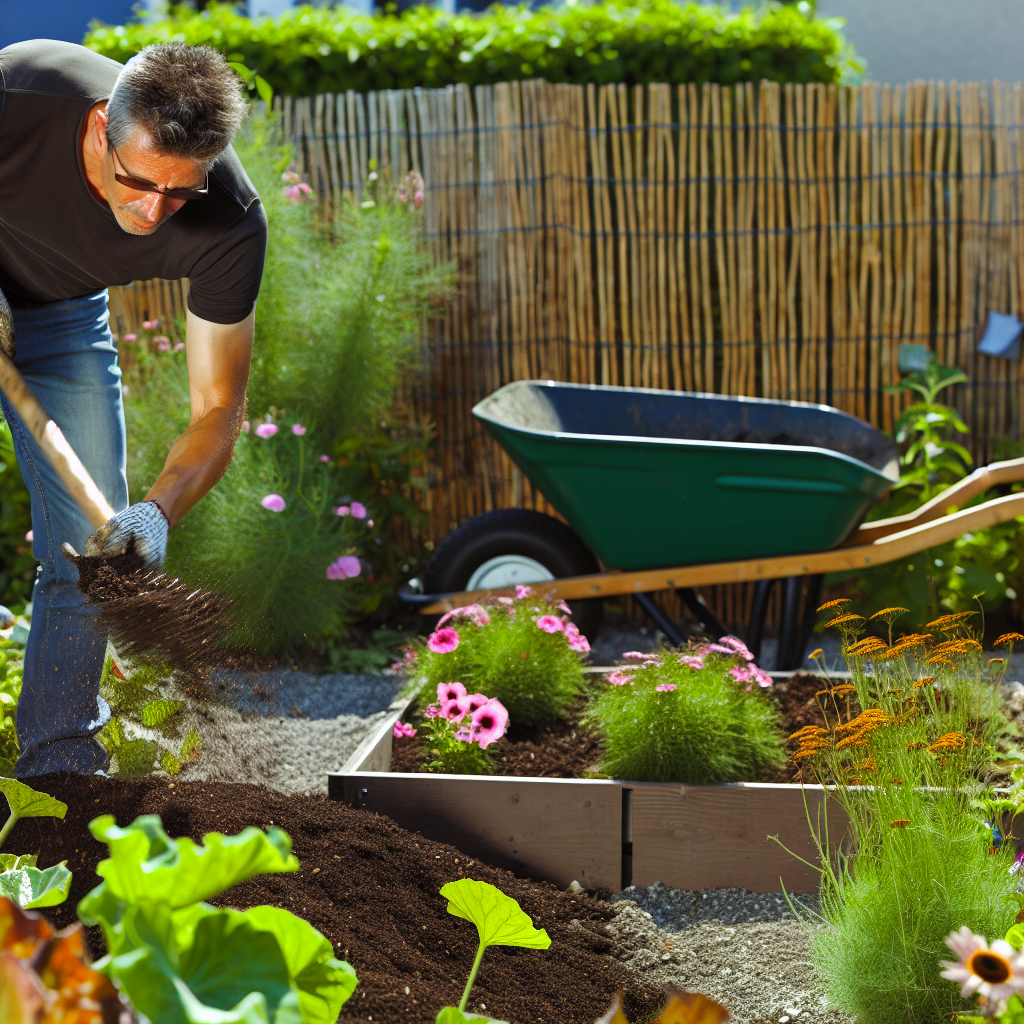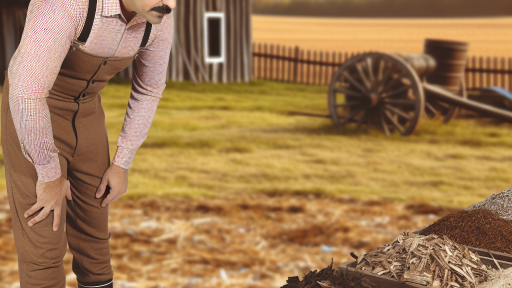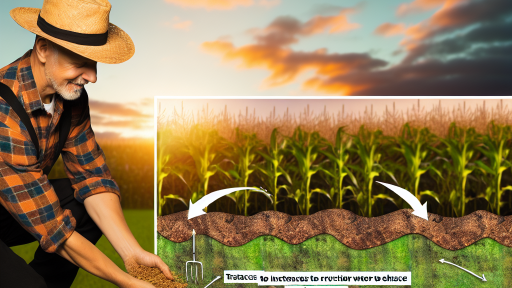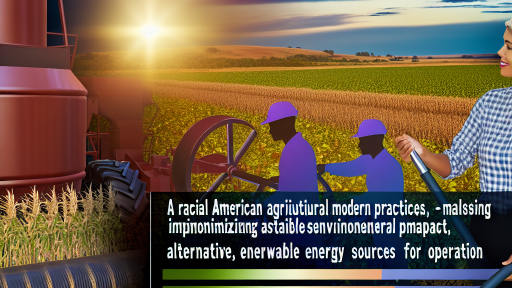Introduction to Mulching
Mulching serves as an essential practice for gardeners and landscapers.
It involves applying a protective layer on the soil surface.
This layer consists of organic or inorganic materials.
Using mulch significantly aids in weed control.
It suppresses sunlight, preventing weed seed germination.
In addition, mulch retains soil moisture effectively.
Consequently, it promotes healthy plant growth.
This practice also helps in temperature regulation.
Overall, mulching reduces weed pressure in gardens and landscapes.
It plays a crucial role in sustainable garden management.
Benefits of Mulching
Mulching offers several benefits beyond weed control.
First, it enriches the soil as organic mulches break down.
Second, it prevents soil erosion caused by water and wind.
Additionally, mulch enhances the aesthetic appeal of gardens.
Furthermore, it supports beneficial organisms in the soil.
Transform Your Agribusiness
Unlock your farm's potential with expert advice tailored to your needs. Get actionable steps that drive real results.
Get StartedTypes of Mulch
Different types of mulch exist for various gardening needs.
Organic mulches include straw, wood chips, and grass clippings.
These materials decompose and enrich the soil over time.
Inorganic mulches such as landscape fabric and gravel, however, do not decompose.
They provide long-term weed suppression and require less maintenance.
Choosing the right type of mulch depends on your gardening goals.
Types of Mulch: Organic vs. Inorganic Mulching Materials
Understanding Organic Mulch
Organic mulch consists of natural materials.
Common options include shredded leaves, grass clippings, and straw.
These materials break down over time and enhance soil health.
Organic mulch helps retain moisture in the soil.
Moreover, it provides nutrients as it decomposes.
It also encourages beneficial microorganisms in the garden.
Benefits of Organic Mulch
Organic mulch improves soil structure and fertility.
It reduces weed growth effectively.
Additionally, it promotes better drainage in heavy soils.
Organic mulch can also moderate soil temperature.
Furthermore, it enhances the visual appeal of garden beds.
Exploring Inorganic Mulch
Inorganic mulch includes synthetic materials.
Popular options are gravel, stones, and landscape fabric.
These materials do not decompose like organic mulch does.
Inorganic mulch offers long-lasting weed suppression.
It also requires less maintenance over time.
With this type of mulch, gardeners can reduce watering frequency.
Benefits of Inorganic Mulch
Inorganic mulch provides excellent weed control.
Showcase Your Farming Business
Publish your professional farming services profile on our blog for a one-time fee of $200 and reach a dedicated audience of farmers and agribusiness owners.
Publish Your ProfileIt helps in retaining soil moisture effectively.
This type also prevents soil erosion in heavy rains.
It may increase the garden’s overall aesthetic appeal.
Additionally, inorganic mulch can deter pests when used correctly.
Choosing the Right Mulch
Your choice between organic and inorganic mulch depends on various factors.
Consider the type of plants you are cultivating.
Also, think about local climate conditions and soil type.
Moreover, assess your willingness to perform ongoing maintenance.
Both types of mulch have distinct advantages.
Choosing the right one can dramatically improve garden health.
Benefits of Mulching
Moisture Retention
Certain mulching materials effectively retain moisture in the soil.
This retention reduces the need for frequent watering.
Furthermore, it helps maintain consistent soil moisture levels.
As a result, plants grow healthier and more resilient.
Temperature Regulation
Mulch acts as an insulating layer over the soil.
This insulation helps keep the soil temperature stable.
It prevents extreme temperature fluctuations.
Consequently, both roots and beneficial organisms thrive.
Soi Health
Applying mulch improves overall soil health effectively.
It adds organic matter as it decomposes over time.
This organic matter enhances soil structure.
Additionally, it enriches soil nutrients for better plant growth.
Healthy soil supports diverse soil life and effective plant growth.
Delve into the Subject: Effective Soil Testing Methods for Farmers
How Mulch Suppresses Weeds
Types of Mulch
Organic mulch, such as wood chips, suppresses weeds effectively.
Inorganic mulch, like gravel, also limits weed growth.
Different types work in various environments and situations.
Physical Barrier
Mulch creates a physical barrier between soil and sunlight.
This blocks light necessary for weed germination.
As a result, fewer weeds establish themselves in mulched areas.
Moisture Retention
Mulch helps retain soil moisture by reducing evaporation.
Healthy plants grow stronger and shade the ground more effectively.
Additionally, vigorous plants compete better against weeds.
Temperature Regulation
Mulch moderates soil temperatures, keeping them stable.
This promotes healthy root growth in desired plants.
Weeds struggle in temperature extremes, reducing their growth.
Organic Matter Contribution
As organic mulch decomposes, it enriches the soil.
Healthy soil supports strong plant growth over time.
Weeds find it harder to thrive in nutrient-rich environments.
Weed Seed Suppression
Mulch prevents weed seeds from reaching the soil.
Showcase Your Farming Business
Publish your professional farming services profile on our blog for a one-time fee of $200 and reach a dedicated audience of farmers and agribusiness owners.
Publish Your ProfileThis reduces the chances of germination and establishment.
Maintaining a thick layer of mulch is essential for effectiveness.
Microbial Activity
Organic mulches promote beneficial microbial activity.
Healthy microbes contribute to soil fertility and plant health.
Weeds find it harder to compete in biologically active soil.
You Might Also Like: Integrated Pest Management in Aquaponics
Selecting the Right Mulch for Your Crop
Understanding Mulch Types
Mulch comes in various types, each offering unique benefits.
Organic mulches, like straw and wood chips, improve soil health.
Inorganic options, such as plastic and rubber, provide long-lasting weed control.
Consider the crop’s specific needs when choosing mulch types.
Assessing Climate and Conditions
Climate significantly impacts mulch effectiveness.
For instance, warmer climates may benefit from light-colored mulch to reflect sunlight.
On the other hand, cooler areas might require darker mulch for heat retention.
Evaluate local weather patterns to make informed choices.
Analyzing Soil Type
Different soils interact with mulch differently.
Sandy soil requires more frequent watering, hence a thicker mulch layer.
Loamy soil holds moisture better, often needing less mulch.
Test your soil to determine its specific requirements before applying mulch.
Considering Crop Type
Each crop has unique requirements that influence mulching strategies.
For example, vegetable crops may thrive with organic mulch, while perennials benefit from inorganic types.
Understand your crop’s growth habits to select the best mulch.
Planning for Integrated Pest Management
Mulch can help manage pests effectively.
Using certain types of mulch may deter insects naturally.
Consider mulches that attract beneficial insects to enhance pest control.
Research pest behaviors in relation to mulch materials before making decisions.
Budget Considerations
Cost is always a crucial factor when selecting mulch.
Organic mulches can be more affordable and eco-friendly.
Inorganic mulches, while initially more expensive, offer longer-term benefits.
Weigh immediate costs against long-term savings when making your choice.
Availability and Supply
Ensure you can easily source your chosen mulch material.
Locally available materials often reduce transportation costs.
Evaluate how often you’ll need to replenish mulch throughout the season.
Look for reliable suppliers in your area for consistent access.
You Might Also Like: Soil Microbiology: Enhancing Fertility Naturally

Application Techniques: Best Practices for Effective Mulching
Selecting the Right Mulch Material
Choose organic materials like wood chips, straw, or leaves.
These options break down and enrich the soil over time.
Consider using synthetic mulches for specific purposes.
Plastic or landscape fabric can provide long-lasting weed control.
Preparing the Ground Before Mulching
Begin by clearing the area of existing weeds.
Removing weeds reduces competition for nutrients.
Showcase Your Farming Business
Publish your professional farming services profile on our blog for a one-time fee of $200 and reach a dedicated audience of farmers and agribusiness owners.
Publish Your ProfileNext, level the soil to promote even mulch application.
Water the area lightly to maintain moisture levels.
Applying Mulch Correctly
Spread mulch evenly across the designated area.
A depth of two to four inches is generally effective.
Make sure to keep mulch a few inches away from plant stems.
This prevents rot and promotes airflow.
Maintaining Mulched Areas
Regularly check for weed growth and address it promptly.
Add more mulch as needed to maintain proper depth.
Monitor moisture levels to ensure adequate hydration.
Adjust your watering technique based on rainfall in your area.
Seasonal Considerations
Apply new mulch in spring for optimal growth conditions.
In fall, consider adding mulch to insulate plants over winter.
Pay attention to the types of plants you are mulching.
This will guide your choice of mulch material and depth.
Find Out More: Optimizing Light for Hydroponic Growth
Timing and Maintenance
When to Apply Mulch
Timing is crucial when applying mulch for effective weed control.
Apply mulch in late spring after soil warms up.
Ensure the soil is moist before applying mulch.
Wait until weeds have germinated and been removed.
This timing reduces competition for nutrients.
Consider your local climate for optimal results.
Types of Mulch for Best Results
Different types of mulch serve unique purposes.
Organic options include wood chips, straw, and grass clippings.
Organic mulches enrich the soil as they decompose.
Inorganic mulches like stones can prevent soil erosion.
Choose a mulch type that fits your landscape needs.
How to Maintain Mulch
Regular maintenance keeps mulch effective over time.
Check mulch levels periodically, especially after storms.
Replenish mulch as needed to maintain a thickness of 2-4 inches.
Remove any debris or weeds that might penetrate the layer.
Water the mulch to keep organic types from drying out.
Dealing with Weed Growth
Even with mulch, some weeds may still emerge.
Regularly monitor your garden for any invasive plants.
Hand-pulling weeds is often the most effective method.
Consider using boiling water as a natural herbicide.
Regularly maintain your yard to prevent weed thriving.
Seasonal Adjustments
Adjust your mulching strategy with the seasons.
In fall, add a thicker layer to insulate plant roots.
In spring, refresh the mulch to promote soil health.
Adapt your approach based on the growth patterns of weeds.
Showcase Your Farming Business
Publish your professional farming services profile on our blog for a one-time fee of $200 and reach a dedicated audience of farmers and agribusiness owners.
Publish Your ProfileStay proactive to ensure your mulching efforts succeed.
Case Studies: Successful Mulching Strategies in Various Agricultural Settings
Organic Vegetable Farming
Alice’s organic farm in Vermont showcases effective mulching techniques.
She employs straw mulch to suppress weeds and retain soil moisture.
This method has reduced her weed growth by nearly 80%.
As a result, her vegetable yields have significantly increased.
Corn and Soybean Rotation
John operates a corn and soybean farm in Illinois.
He utilizes black plastic mulch during the corn growing season.
This strategy enhances soil warmth and minimizes weeds.
By rotating crops, he maintains soil fertility and health.
Fruit Orchard Management
Emma manages a fruit orchard in Washington state.
She applies wood chip mulch around her apple trees.
This practice enriches the soil and provides necessary nutrients.
Moreover, it effectively suppresses competing weed species.
Community Gardens
The community garden initiative in New York has introduced diverse mulching strategies.
Volunteers use cardboard and leaves for eco-friendly weed control.
These materials break down and improve soil quality over time.
The community has celebrated a vibrant and sustainable garden ecosystem.
Row Crop Farming
Mark operates a row crop farm in Texas with innovative mulching solutions.
He has implemented biodegradable mulch films for his crops.
This alternative reduces plastic waste while controlling weeds.
His farm has seen both environmental and economic benefits from this shift.
Research and Development
A collaborative study by the University of California explored mulching techniques.
Researchers tested various organic materials for effectiveness.
The results highlighted the superiority of coconut coir in weed suppression.
Farmers who adopted this material reported higher satisfaction and crop success.
Additional Resources
Clover as a cover crop for weed suppression in an intercropping …




